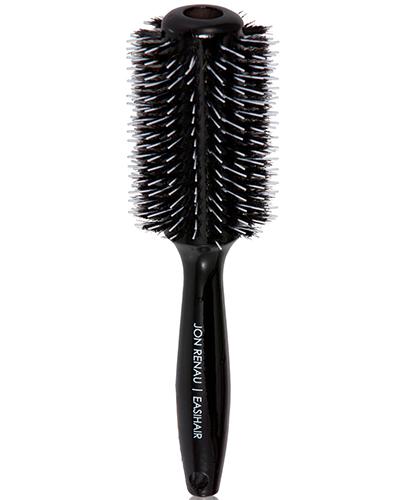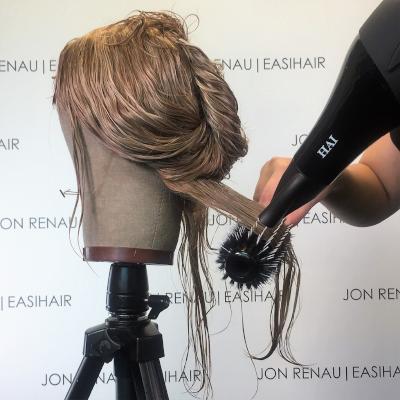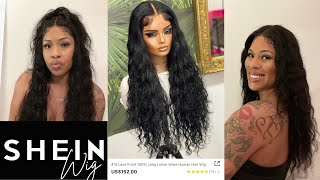How to Use A Round Brush: A Step-by-Step Guide
- Posted on 03 November, 2021
- Hair Knowledge
- By Anonymous
Properly caring for your wig is so important! You can enjoy your favorite wig so much longer if you maintain it correctly. Typically, you'll want to wash any wig after 8 to 10 wears; however, lifestyle can affect this. For example, if you exercise and sweat in a wig or are around heavy smoke, you'll need to wash your wig more often. After a wash, a blowout with a round brush will keep your wig looking its best. Read for a step-by-step guide on how to use a round brush with your wig!
Wig Styling Tools
Round brushes come in different sizes and styles. Each brush's diameter affects the styling. Smaller diameters are better for tighter curls and waves. Larger round brushes create looser curls and flips. For longer hair, you will probably want a larger brush. When choosing a round brush, be sure not to pick a round brush with any epoxy-ball tips. These seemingly innocent beads can cause major damage to synthetic or human hair wigs. We recommend the Round Boar Bristle Brush from Jon Renau.

Now, it’s time to begin styling! When working with your wig, always secure your piece to a steady canvas block head. Your wig will keep shape, and you'll have a 360° view of your progress. Note: Do not blow out your wig while you are wearing it.
- Once you’ve washed your wig, it's time to add some Blow Dry Balm! Try Jon Renau's Blown Away Blow Dry Balm for human hair wigs!

- It’s time to dry! If your wig is made of heat-friendly synthetic fibers, never comb or brush it soaking wet. Instead, blow dry it to 80% dry before brushing out and beginning your blow out with the round brush. A human hair wig can be brushed while wet and can make it easier to style. The 80% dry rule still applies to the round brush styling with a human hair wig!
- Keep in mind the parting limitations of your wig. If you have a lace front wig or a monofilament wig, you have parting freedom. If not, keep the original part.
- You'll want to section off your hair into manageable portions. We recommend going with 4 sections—first, part your hair from ear to ear and then down the center. From there, use a wide tooth comb to give you ½ inch pieces of the hair. Be careful not to puncture the wig cap!
- You’ll work on one ½ inch piece at a time.

With a wig, it’s best to start from the bottom and work your way up. Remember your four sections from before?
- - Take a ½ inch piece from one of the two bottom sections.
- - Place your brush at the base of your first ½ inch strand.
- - You will then slowly pull the brush through the strand towards the ends, following with the hairdryer.
- - Once you reach the ends of the strand, circle your brush a few times to ensure you properly dry the ends.
Still, with the hairdryer following, roll the hair around the brush and back to the base. While the hair is wrapped around the base, use your hair dryer's "Cool Shot" feature. If you’ve never really understood the function of the Cool Shot button, prepare to learn!
This button will use a burst of cooler air to close the hair cuticle, set the style, and add shine. Once the strand is dry and set, slowly and ever so carefully untwist the brush to release the hair. You will now complete these steps on each strand on the bottom sections before making your way to the top sections.
 Product shown is Bravo by Raquel Welch
Product shown is Bravo by Raquel Welch
Once you have completed all these steps, you'll have a beautiful blowout! Finish off with a spritz of finishing spray to make this styling last. If you are styling a human hair wig, a regular hair spray will work. However, never use human hairspray on a synthetic wig. Regular hair spray can destroy a synthetic hair wig. But don't worry, we've got some hairspray designed especially for synthetic fiber! Only use styling products made for synthetic hair fibers.
Have any additional tips for styling a wig with a round brush? Let us know in the comments!



